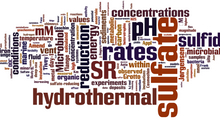Hot off the press: Ridge to Reef microbial census of Waimea (Amend, 2022)
- kianalfrank
- Aug 12, 2022
- 2 min read
Excited to announce the publication of
Amend, A.S., Swift, S.O., Darcy, J.L., Belcaid, M., Nelson, C.E., Buchanan, J., Cetraro, N., Fraiola, K., Frank, K., Kajihara, K. and McDermot, T.G. (2022). A ridge-to-reef ecosystem microbial census reveals environmental reservoirs for animal and plant microbiomes. Proceedings of the National Academy of Sciences, 119(33), p.e2204146119. https://doi.org/10.1073/pnas.2204146119
The Waimea Valley, with its diverse ecosystems on Oʻahu, became our canvas for this monumental field expedition. Over the course of our research, we collected samples from various corners of the valley, ranging from the pristine waters of Waimea Bay to the remote depths of Waimea Valley. Our mission was to uncover the hidden secrets of the microbial world, and what we discovered left us in awe.
The Key Discoveries
Microbes Follow the Food Web: One of the most captivating findings of our research was the revelation that microbes, much like other organisms, adhere to the principles of the food web. We observed the highest microbial diversity in soil and stream water, followed by plants and animals. This pattern closely mirrors the energy flow within ecosystems, underscoring the intricate connections that weave through all life forms.
Microbial Diversity in Watersheds: Our study revealed that the majority of microbial diversity within a watershed is concentrated within the soil and stream water. This insight emphasizes the critical role played by these areas as reservoirs for microbial diversity. They serve as waiting rooms where microbes can find hosts when the opportunity arises.
Local Distribution Predicts Global Presence: Perhaps one of the most intriguing discoveries was the connection between the local distribution of a microbial species and its global presence. Microbes that thrived in Waimea Valley also made their homes in diverse habitats around the world. This observation sheds light on the global distribution patterns of these remarkable microorganisms.
Connecting the Dots
Our research, often referred to as a 'bioblitz,' involved an exhaustive census of all environmental substrates and potential microbial hosts within the watershed. We collected samples from an array of sources, including soil, stream and sea water, animals (ranging from rodents to sea urchins), and plants (encompassing towering trees to delicate ferns and algae). Over 800 million microbial DNA "barcodes" were meticulously extracted and sequenced to identify the presence of different microbes across these diverse locations.
Implications and the Power of Collaboration
The significance of our research extends far beyond the immediate findings. It offers insights into the origins and assembly processes of symbiotic microbes and highlights the indispensable role of microbes in preserving biodiversity and ecosystem services. This endeavor was a testament to the power of collaboration. Experts from various fields and colleges within the University of Hawaiʻi, including SOEST, the College of Social Sciences, the College of Tropical Agriculture and Human Resources, and the College of Natural Sciences, came together to make this 'bioblitz' a resounding success. Our collective efforts exemplify the incredible potential of teamwork in advancing our understanding of the natural world.























Comments